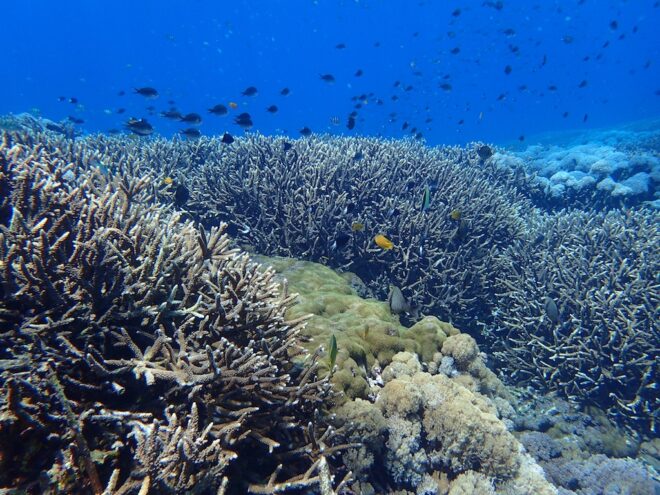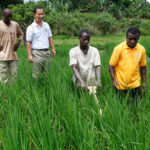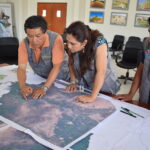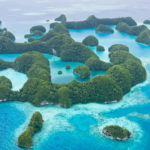Ten years ago at COP10, the Convention on Biological Diversity in Nagoya, Aichi Prefecture, the parties adopted “The Strategic Plan for Biodiversity 2011–2020 and the Aichi Biodiversity Targets,” with a long-term target of achieving a world “Living in Harmony with Nature” featuring a number of short-term biodiversity targets for 2020. In this article, we look at the progress being made toward these goals, with a focus on some interesting initiatives of the Japan International Cooperation Agency (JICA) to conserve and manage biodiversity in developing countries.
It is estimated that there exist 1.75 million known species on Earth, and around 30 million if we include those unknown. This biodiversity provides the human race with a variety of benefits commonly termed “ecosystem services.” The Millennium Ecosystem Assessment, which was conducted under the auspices of the United Nations, divides ecosystem services into four categories. “Provisioning services” are services that provide food, water, wood, fibers, medical supplies and other raw materials; “regulating services” are services that purify water, reduce natural disaster risks and mitigate climate change; “cultural services” are services that generate spiritual, religious and aesthetic values; and “supporting services” are services that produce organic matter and oxygen through photosynthesis, decompose organic matter vis soil microbiology, and circurate nutrient salts like nitrogen and phosphorus.
However, the Global Assessment Report on Biodiversity and Ecosystem Services, published by Intergovernmental Science – Policy Platform on Biodiversity and Ecosystem Services (IPBES) in 2019, states that the loss of biodiversity and ecosystem services since 1970 has been at the highest rate in human history. The direct drivers are land/sea use change, direct exploitation, climate change, pollution and invasive alien species. The largest driver of change in land and fresh-water ecosystems is land-use changes, the most widespread form of which is agricultural expansion. More than one-third of all land is changing from forest and wetland to farmland and pastures. Moreover, there are indirect drivers underlying and accelerating the direct drivers, including population growth and concomitant increases in production, consumption and trade, as well as technological innovations that amplify those increases and also insufficient governance.
Convention on Biological Diversity
 In order to conserve the world’s biodiversity as it faces these threats, the UN adopted the Convention on Biological Diversity (CBD) in 1992. The CBD has the aims of “conservation of biological diversity,” “sustainable use of its components” and “fair and equitable sharing of the benefits arising out of the utilization of genetic resources” (ratified by 196 states as of now).
In order to conserve the world’s biodiversity as it faces these threats, the UN adopted the Convention on Biological Diversity (CBD) in 1992. The CBD has the aims of “conservation of biological diversity,” “sustainable use of its components” and “fair and equitable sharing of the benefits arising out of the utilization of genetic resources” (ratified by 196 states as of now).
The Conference of the Parties (COP), which gathers the signatories of the CBD, is held more or less every other year, starting in 1994. COP10 was held in Nagoya, Aichi Prefecture in 2010, where the Aichi Biodiversity Targets was adopted as the new international targets toward 2020. The long-term target (vision) of the Aichi Biodiversity Targets is a world “Living in Harmony with Nature” in which “By 2050, biodiversity is valued, conserved, restored and wisely used, maintaining ecosystem services, sustaining a healthy planet and delivering benefits essential for all people.” The short-term target (Mission) is to “Take effective and urgent action to halt the loss of biodiversity” so that “by 2020 ecosystems are resilient and continue to provide essential services, thereby securing the planet’s variety of life, and contributing to human well-being, and poverty eradication.”
The Aichi Biodiversity Targets consist of five strategic goals (A–E) and twenty individual targets associated with the goals needed to accomplish the vision and mission (see table).
Conserving the Forests with Coffee
The international community is engaged in a variety of activities to conserve biodiversity on the basis of the Aichi Biodiversity Targets. The Japan International Cooperation Agency (JICA) is also implementing technical assistance aimed at biodiversity conservation in developing countries.
“Local communities facing poverty in developing countries use natural resources for their daily living, like food, fuel and other materials, in unsustainable ways, and it is often so that natural environments disappear or deteriorate. There is frequent illegal logging and poaching even in national parks and other protected areas because the management systems are insufficient,” says Sakaguchi Noriaki, senior advisor of the Forest and Nature Conservation Group in JICA’s Global Environment Department. “When supporting biodiversity conservation in developing countries, we need to build mechanisms that improve livelihoods of local communities by changing their ways of natural resource use from exploitative to sustainable.”
One part of JICA’s technical cooperation for biodiversity conservation is the “Participatory Forest Management Project in Belete-Gera” in Ethiopia, which started in 2003.
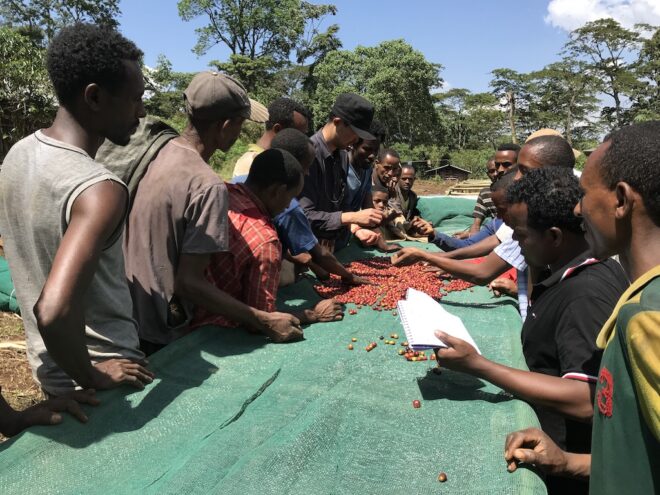
A JICA expert (black hat) teaches local people how to select coffee beans as part of the Participatory Forest Management Project in Belete-Gera, Ethiopia COURTESY OF JICA
The deforestation is considerable in Ethiopia as forest coverage that used to be 35% of the country had declined to 4% in 2000. The Belete-Gera Forest Priority Area in Oromia Region in the country’s southwest, which is the site of the project, has rich biodiversity and is home to precious wildlife such as leopards, but forest area has gone down from about 115,000 ha in 1995 to about 102,000 ha in 2010 due to farmland expansion and illegal logging.
The aim of the project is to improve livelihoods of local communities by having them harvest coffee beans from wild coffee trees native to the Belete-Gera Forest Priority Area (habitat of the original species of the tree currently used to produce Arabica coffee around the world) as well as processing and selling it as forest coffee with high added value. At the same time, it aims to reduce deforestation and forest degradation by having the local communities take charge of activities to conserve the forests where the coffee trees grow and thereby realize sustainable forest conservation and management in the protected area.
Playing a central role in this project are the forest management associations called “WaBuB,” which are made up of local communities living in the protected area. Each WaBuB enters into a forest management agreement with the regional government, granting them the right to reside in the protected area and use coffee beans, honey and other non-timber forest products while also obligating it to conserve the forest in its current state. Some 67 WaBuBs with the participation of about 3,000 households have been established in areas where coffee trees grow in the forests.
The project not only aims to increase the number of WaBuBs but provides support to forest management as well as activities to enhance the quality of the forest coffee beans and their sale. WaBuB coffee beans were certified as an eco-friendly product by the international NGO Rainforest Alliance in 2007, after which UCC Ueshima Coffee Co. began selling a premium coffee using the beans in Japan. Coffee beans from Belete-Gera are now sold at prices 15–20% higher than before, and as a result, the annual income of a farmer family has gone up by the equivalent of a month’s extra income. Moreover, the annual deforestation rate of the entire Belete-Gera Forest Priority Area has gone down from -1.16% in 1995–2000 before the project started to -0.46% in 2010–2015 after it started.
Phase II of the project concluded in 2012, but JICA has continued to support the WaBuBs in the region since 2014 in collaboration with the REDD+ (Reducing Emissions from Deforestation and Forest Degradation in Developing Countries) project, which covers the entire Oromia Region with support from the World Bank.
Ecosystem Conservation through Integrated Management
JICA has been conducting the Anzali Wetland Ecological Management Project in Iran since 2003. Anzali Wetland by the Caspian Sea is a wintering and breeding site for the Dalmatian pelican, the pygmy cormorant and other endangered species as well as the habitat of more than 50,000 water birds. Anzali Wetland was designated as a wetland of international importance in the Ramsar Convention in 1975, but the ecosystem has been damaged by human activities such as land development and pollution from sewage and waste.
“Biodiversity loss and ecosystem degradation are caused by cumulative impacts of multiple drivers. In order to simultaneously address multiple drivers and effectively conserve and manage the ecosystems, we need to apply an Ecosystem-Based Management (EBM) approach that involves stakeholders and makes decisions with a scientific basis,” says Sakaguchi. “The EBM approach is a form of integrated management that takes into account the interactions among ecosystem components, including humans and other species, their habitats and ecosystem services. The EBM approach requires the development of a functional system that finds management measures through broad cross-sectoral consultation among fishery, agriculture, tourism and other sectors, including information-sharing.”
As part of the project, the Anzali Wetland Management Committee (AWMC) was established, under which subcommittees on “Ecosystem Conservation,” “Watershed Management,” “Sewage Management,” and “Waste Management,” “Ecotourism,” and “Environment Education and Public Relations” were organized. The AWMC meets regularly and its participants share progress reports and other information.
The project activities include zoning of protected areas for wetland conservation, regulating wetland development and use, and support of the monitoring of migratory waterbirds and threatened species. Furthermore, as a pilot project of watershed management, facilities have been constructed to prevent sediment outflow to wetland through rivers from the mountain area. Besides this, ecotourism training is held for local communities to promote community-based ecotourism, and a community center has been built housing ecotour offices and stores selling local specialties.
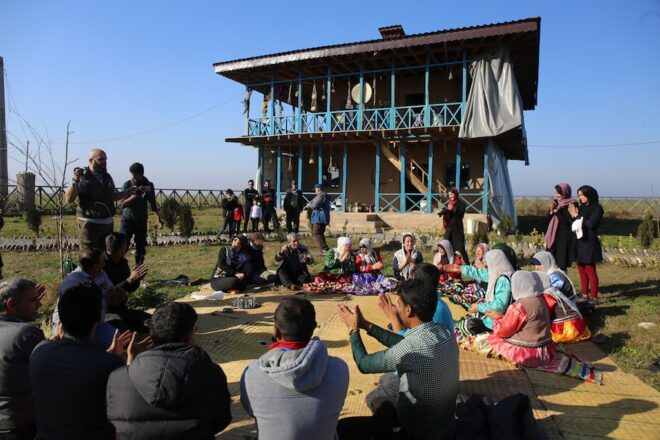
A community center built as part of the Anzali Wetland Ecological Management Project in Iran COURTESY OF JICA EXPERT TEAM
“Most national parks in Japan contain privately owned land. This is why national park management and wildlife protection is implemented while taking in the opinions of diverse stakeholders,” says Sakaguchi. “It is precisely this approach that is implemented in the integrated management of ecosystems in Anzali Wetland and elsewhere in developing countries.”
Blue Carbon Conservation
During a five-year period from 2017, JICA and the Japan Science and Technological Agency (JST) have engaged in the “Comprehensive Assessment and Conservation of Blue Carbon Ecosystems and Their Services in the Coral Triangle” (Blue CARES) project as part of a Science and Technology Research Partnership for Sustainable Development (SATREPS) in the Philippines and Indonesia.
Blue carbon refers to carbon absorbed by marine organisms, and makes up 55% of the carbon absorbed by worldwide organisms. In particular, the amount of carbon stored in the soil by mangroves and seagrass beds is much higher compared to what can be found in terrestrial forests. However, the speed by which mangroves, seagrass beds and other coastal systems disappear is estimated to be as much as four times that of tropical forests on land.
Blue CARES aims to quantitatively analyze the dynamics of and comprehensively evaluate the ecosystem services of blue carbon captured and sequestered in coastal ecosystems in the Philippines and Indonesia, which are at the center of the Coral Triangle, an area of the richest biodiversity in the Pacific Ocean. It also aims to formulate the Blue Carbon Strategy, which accommodates scenarios for future complex environmental loads, and suggests policies for biodiversity conservation, mitigation and adaption for climate change, as well as sustainable development.
In concrete terms, Blue CARES comprehensively and quantitatively evaluates and analyzes the mutual relationships among ecosystem services, carbon dynamics, disaster risk reduction, fishery and tourism resources under complex environmental loads, using field surveys and remote-sensing technologies. For example, it clarifies the “trade-off” relationship of how degradation of the ecosystem by overfishing leads to a reduction in the functional capacities of carbon sequestration and disaster risk reduction, and explores leverage points to optimize the use of such services in sustainable ways. Based on these results, it has developed the integrated Blue Carbon Strategy to contribute global and local problem-solving for climate change mitigation and sustainable natural resource use by sustaining and strengthening the health and resilience of coastal ecosystems.
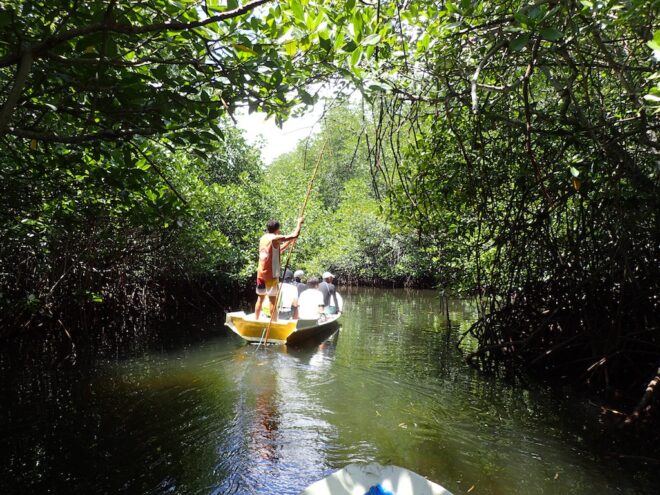
An ecotourism trip to the mangroves on Nusa Lembongan, an island between Bali and Nusa Penida in Indonesia COURTESY OF JICA EXPERT TEAM
“In areas whose resources are used by multiple stakeholders, we collect and share not only the quantitative data on resource use but also scientific data on the ecosystem and its services, and if we can optimize the use of resources and ecosystem services in sustainable ways, then integrated ecosystem management that meets the needs of local communities will become possible,” says Sakaguchi. “This also requires a comprehensive management system that offers opportunities to reconcile multiple resource uses through the participation of all stakeholders and mutual understanding of the interests, values and forms of resource use among them based on scientific evidence.”
Toward 2030
At present, the international community is discussing a new framework for global biodiversity conservation toward 2030, “The Post 2020 Global Biodiversity Framework,” on the basis of the progress of the 2020 Aichi Biodiversity Targets and the IPBES’s Global Assessment Report published in 2019. The mission of the Aichi Biodiversity Targets was to “stop the loss of biodiversity by 2020,” but according to Sakaguchi, the mission of the new framework for 2030 is “to put biodiversity on a path to recovery.” In order to do so, each country needs not only to protect remaining natural ecosystem areas, but also actively restore deteriorated ecosystems to health and resilience. In order to implement and develop such initiatives on-site, there is a need for cross-sectoral and integrated ecosystem management approaches that are participated in by all stakeholders as well as fund mobilization with mechanisms for introducing public as well as private funds.
JICA takes these points into account and is planning a new initiative in cooperation with private companies for the conservation and restoration of mangroves that brings multiple benefits to people, including the mitigation of climate change, the provision of fishery resources and the reduction of natural disaster risks.
“The new biodiversity targets also have a lot to do with the Sustainable Development Goals (SDGs),” says Sakaguchi. “To achieve the SDGs and 2050 biodiversity vision by dealing with the multiple direct and indirect drivers of ecosystem loss and degradation, we need to mainstream biodiversity in development sectors like agriculture, forestry, fisheries, manufacturing, and energy, as well as facilitate social transformative change, meaning changing financial measures in politics and business, development plans, and production and consumption patterns to sustainable ways. To do this, JICA will be even more actively engaged in cross-sectoral approach projects that involve stakeholders as well as sustainable and extensive projects that mobilize funds from the private sector.”
As of May 12, due to the current COVID-19 pandemic, about 4.3 million people worldwide have been infected with coronavirus and more than 287,000 have died. It has been argued that the infection of humans by coronavirus and other zoonotic diseases is a consequence of more opportunities for contact between people and wild animals due to the logging of forests where those animals live as well as the selling of captured wild animals as food in the cities. Additionally, this kind of pandemic has become possible because of the development of transportation networks that enable tourism and business travel across the world. JICA’s cooperation in the field of biodiversity conservation can be seen as an initiative supporting the fundamental measures against zoonotic diseases.
By SAWAJI Osamu, The Japan Journal
Note: This article first appeared in the May/June 2020 issue of the Japan Journal.

